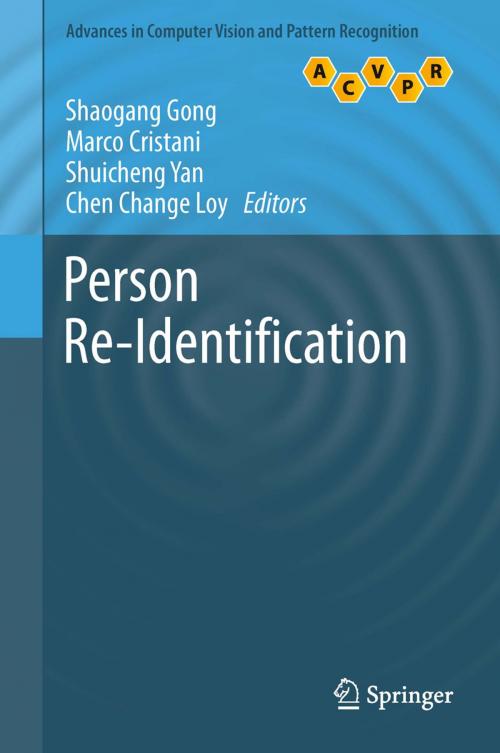Person Re-Identification
Nonfiction, Computers, Advanced Computing, Engineering, Computer Vision, Application Software, Computer Graphics, General Computing| Author: | ISBN: | 9781447162964 | |
| Publisher: | Springer London | Publication: | January 3, 2014 |
| Imprint: | Springer | Language: | English |
| Author: | |
| ISBN: | 9781447162964 |
| Publisher: | Springer London |
| Publication: | January 3, 2014 |
| Imprint: | Springer |
| Language: | English |
The first book of its kind dedicated to the challenge of person re-identification, this text provides an in-depth, multidisciplinary discussion of recent developments and state-of-the-art methods. Features: introduces examples of robust feature representations, reviews salient feature weighting and selection mechanisms and examines the benefits of semantic attributes; describes how to segregate meaningful body parts from background clutter; examines the use of 3D depth images and contextual constraints derived from the visual appearance of a group; reviews approaches to feature transfer function and distance metric learning and discusses potential solutions to issues of data scalability and identity inference; investigates the limitations of existing benchmark datasets, presents strategies for camera topology inference and describes techniques for improving post-rank search efficiency; explores the design rationale and implementation considerations of building a practical re-identification system.
The first book of its kind dedicated to the challenge of person re-identification, this text provides an in-depth, multidisciplinary discussion of recent developments and state-of-the-art methods. Features: introduces examples of robust feature representations, reviews salient feature weighting and selection mechanisms and examines the benefits of semantic attributes; describes how to segregate meaningful body parts from background clutter; examines the use of 3D depth images and contextual constraints derived from the visual appearance of a group; reviews approaches to feature transfer function and distance metric learning and discusses potential solutions to issues of data scalability and identity inference; investigates the limitations of existing benchmark datasets, presents strategies for camera topology inference and describes techniques for improving post-rank search efficiency; explores the design rationale and implementation considerations of building a practical re-identification system.















